1. Valley View Center – Dallas, Texas
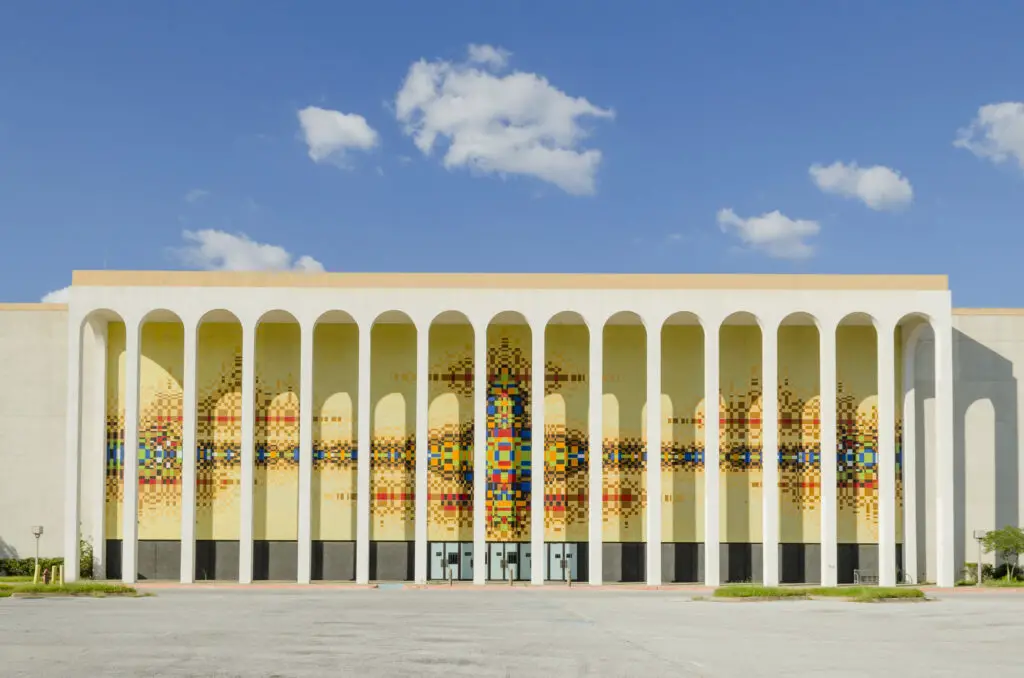
Once a buzzing hub for fashion, food, and fun, the Valley View Center in Dallas now sits as a quiet relic of the past. After its peak in the ’80s, the mall slowly lost its charm with many of its anchor stores shutting down. Today, its nearly empty halls echo with the ghostly sounds of long-forgotten mall jingles and the faint scent of popcorn. The 80s-inspired architecture still holds a certain charm, with its brightly colored tiles and retro signage that remind visitors of a time when malls were the place to be.
The mall’s desolate corridors and dim lighting create an eerie atmosphere, as if stuck in a time warp. You can almost imagine the shoppers of the past striding down the polished floors with bags in hand. The food court, once filled with the aroma of freshly cooked pizza and greasy fries, now only houses abandoned booths and empty counters. This abandoned mall feels like it’s still waiting for its heyday to return, though it’s unlikely it ever will.
2. Northland Center – Southfield, Michigan
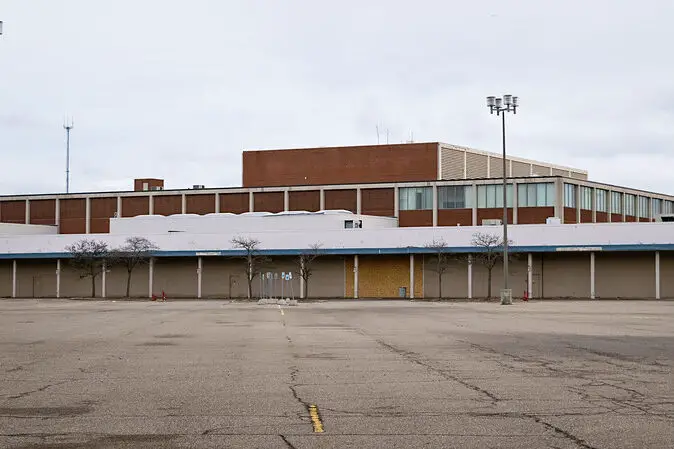
Northland Center in Southfield, Michigan, was once the largest shopping center in the world when it opened in 1954, but it started to lose its magic as the decades passed. By the time the ’80s rolled around, the mall had already started its slow decline, eventually leading to its closure in the early 2000s. Walking through the eerie hallways today, you’ll still find remnants of the extravagant displays that once dazzled shoppers. The bright neon lights, the shiny floor tiles, and the large signage still hold the feeling of a time when the mall was a shining star in the shopping world.
The empty anchor stores and lifeless corridors give off an unmistakable aura of nostalgia, harkening back to a time when Northland was the go-to destination for shopping and socializing. Its massive parking lot, once teeming with cars, now sits mostly empty, offering a haunting view of what once was a thriving commercial hub. With many of its once-glamorous stores now abandoned, Northland Center offers a striking snapshot of the past, frozen in time.
3. Valley View Center – Aurora, Ohio
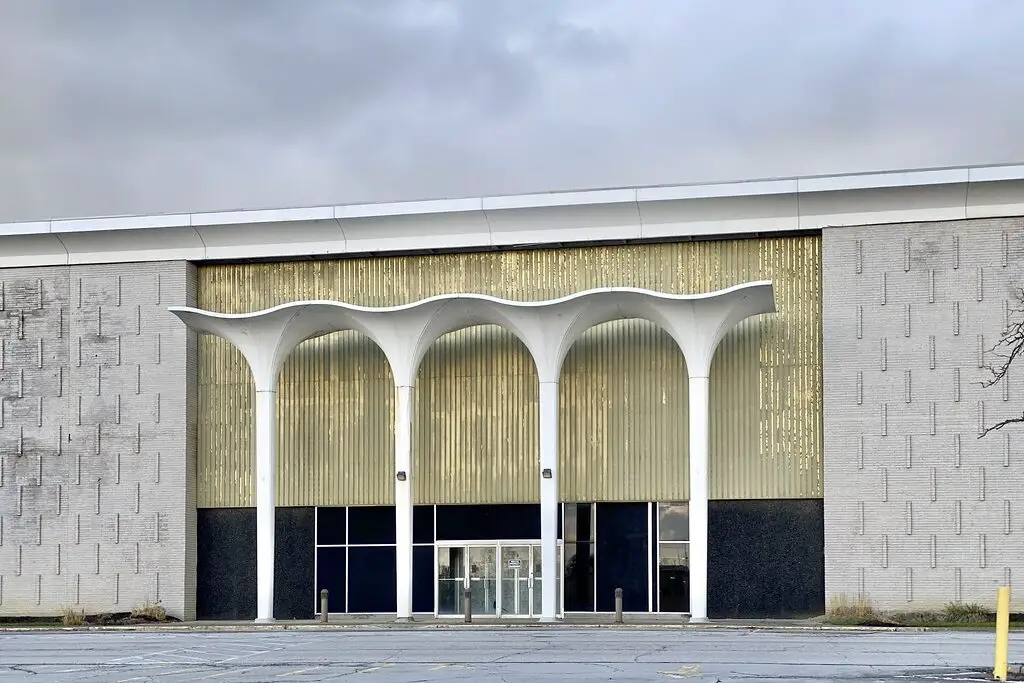
In the heart of Ohio, Valley View Center once boasted an impressive selection of stores, from department stores to independent retailers. During the 1980s, it was a hotspot for families to spend a day browsing the latest trends, but the mall saw a slow fade into decline. As shopping preferences shifted, so did its popularity, leaving it deserted. What remains today is a collection of empty storefronts and a few holdout stores that never quite packed up. The mall’s design—complete with neon signage and brightly colored walls—feels straight out of the 1980s, making it an unintentional time capsule.
Though the once-lively food court now sits mostly vacant, remnants of its past still linger in the form of old signage and the faint memory of laughter and chatter. Walking through this mall today is like stepping back into a more innocent time when shopping was more of an event than a necessity. It’s hard not to feel a sense of nostalgia for the bustling center it used to be.
4. Golden Hills Mall – Golden, Colorado
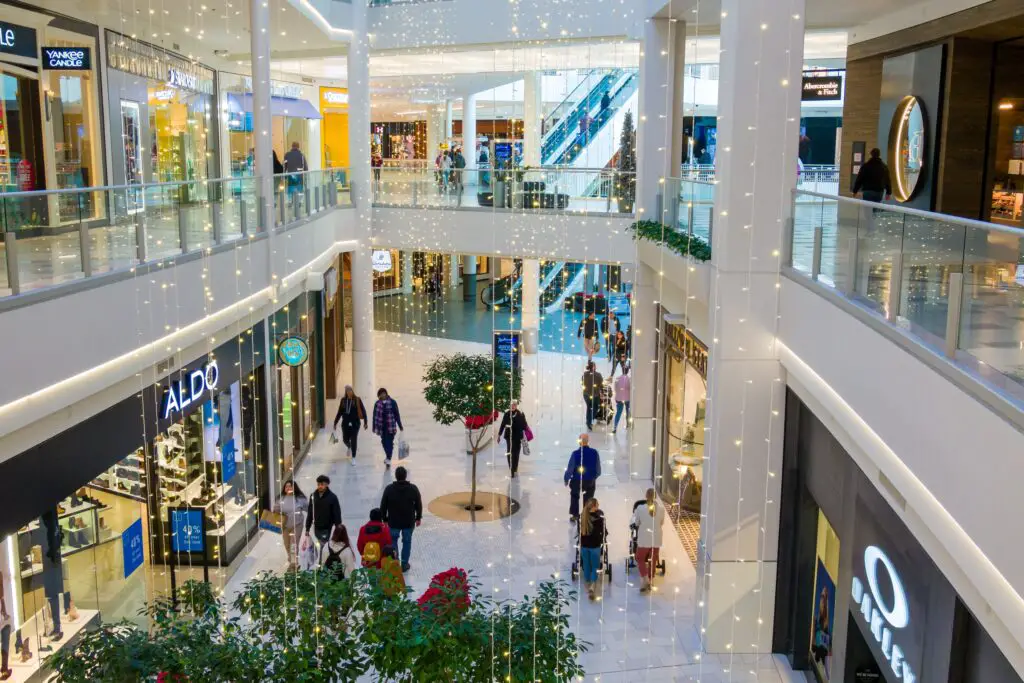
Golden Hills Mall was the kind of place that had it all—movies, food, and a vibrant shopping scene that reflected the best of the ’80s. From the colorful stores to the massive food court, it was a favorite hangout spot for teens and families alike. However, over the years, business slowed, and what was once a bustling shopping center became an increasingly quiet place. The remnants of its neon lights and vintage storefronts still stand, evoking memories of a time when shopping malls were cultural landmarks.
The food court that once smelled of buttery popcorn and sweet soda now sits in silence, its tables covered in dust. Though many stores have long since closed, the building still retains the nostalgic charm of its former self, offering a snapshot of a simpler time when malls were the heart of social life. The Golden Hills Mall may be abandoned, but it remains a tribute to a time when it was the pulse of the community.
5. Eastland Mall – Harper Woods, Michigan
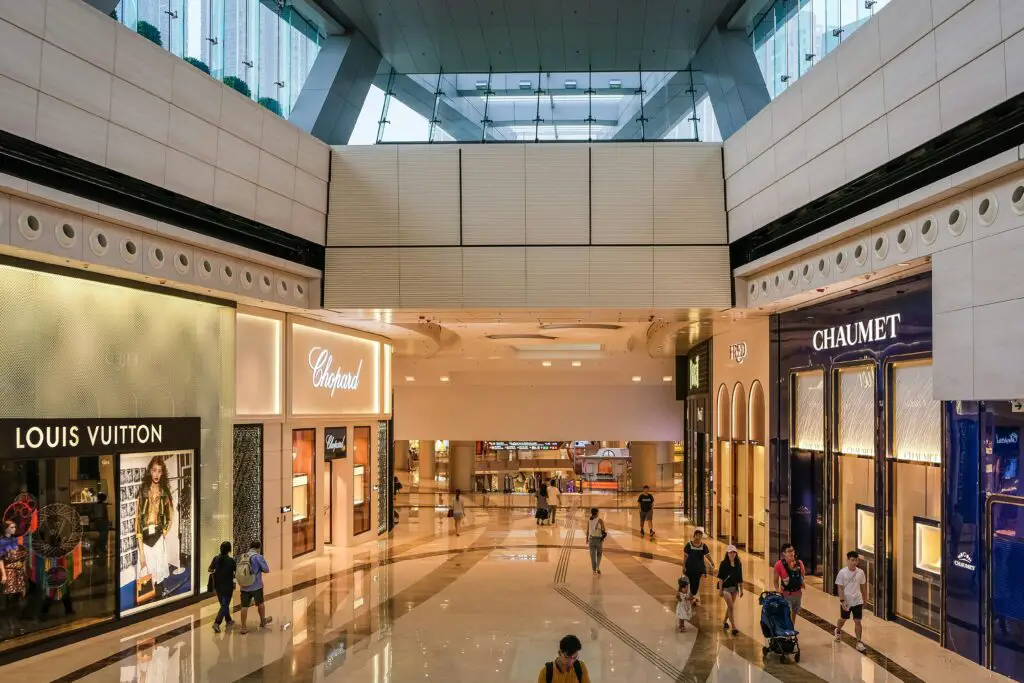
Eastland Mall was one of the first to truly embody the spirit of the ’80s with its sleek, modern design and cutting-edge stores. Located just outside Detroit, it was the go-to destination for fashion, food, and entertainment, and was one of the biggest malls in the region. In its prime, the mall had a vibrant food court and a wide variety of trendy shops, but the rise of online shopping and nearby shopping centers led to its closure.
Walking through the mall now, you’re greeted with echoes of the past—vacant stores that once sold the latest fashion trends, and empty hallways that once saw throngs of people. Its architecture, with its bold geometric designs and brightly lit entrances, still feels like a visual representation of 1980s commercial culture. It may no longer serve as the community hub it once was, but the memories it holds are frozen in time.
6. Forest Park Mall – St. Louis, Missouri
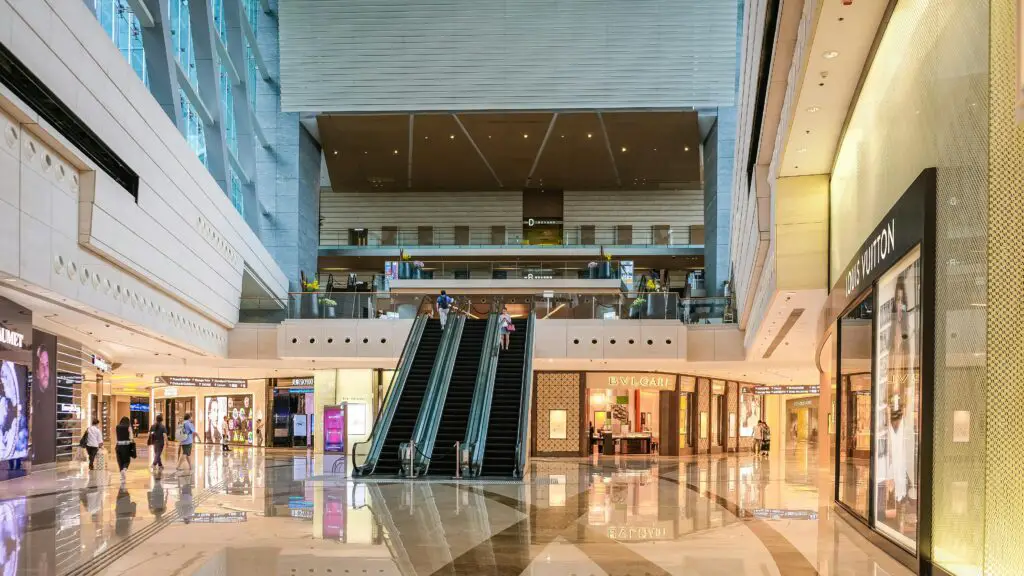
Forest Park Mall was a staple of St. Louis for years, and it seemed to embody everything that made 1980s shopping culture so distinctive. From the towering entrance to the neon lights that once glowed in the windows, the mall offered a grand experience for its shoppers. But as the years passed and larger malls opened up in the area, Forest Park slowly became less and less relevant, and its doors eventually closed for good.
The mall’s once-popular stores have long been abandoned, leaving only echoes of the past. The furniture, the signages, and the structure of the space all still reflect that unmistakable ’80s energy. With its sparse lighting and the occasional lone shopper, the mall today feels like an odd time capsule that captures a moment in time when shopping was an event in itself.
7. Southwyck Mall – Toledo, Ohio
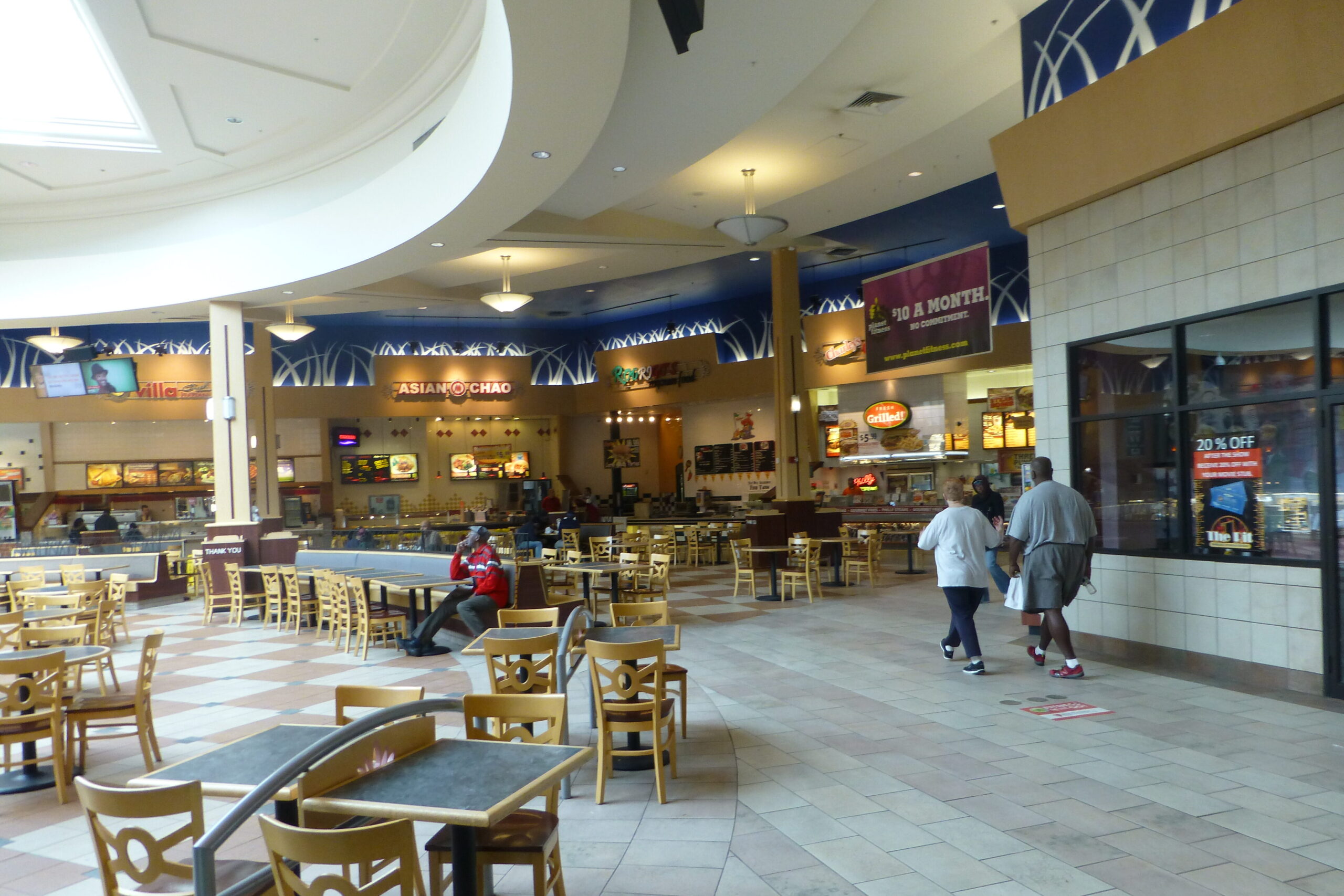
Southwyck Mall was the quintessential 1980s shopping center, full of vibrant, trendy stores and bustling with energy. The mall had a distinct architectural style—think bright lights, open spaces, and plenty of places to sit and people-watch. However, as the decades wore on, it started to lose its charm. By the late ’90s, many stores began to leave, and the once-thriving center fell into disrepair.
Today, Southwyck Mall’s cavernous halls are filled with little more than a faint, nostalgic atmosphere. The stores that once housed the latest in fashion and technology now sit empty, with faded signs serving as the only memory of what once was. Its ghostly silence invites anyone who visits to pause and reflect on a time when the mall was the center of life for young and old alike.
8. New Orleans Centre – New Orleans, Louisiana
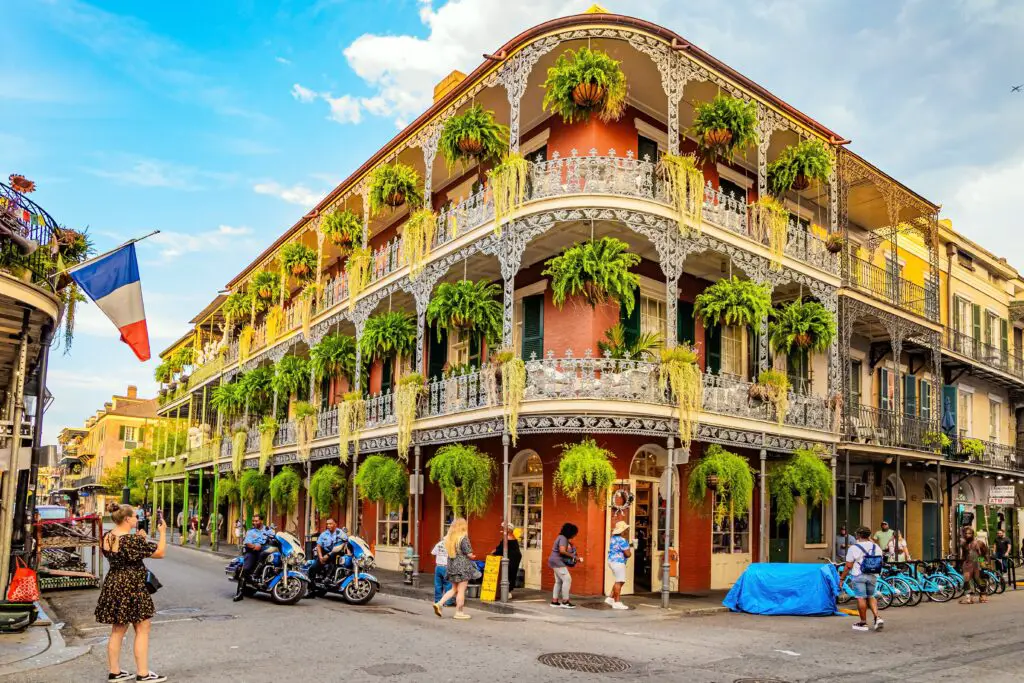
New Orleans Centre was one of the most innovative malls to open in the ’80s, featuring sleek modern architecture and a unique mix of stores. It was more than just a shopping mall—it was a cultural hotspot, offering everything from trendy boutiques to art galleries. Sadly, by the early 2000s, its charm had faded, and the mall eventually closed.
Walking through the abandoned space, the faint smell of old carpet and vinyl tiles fills the air. Its colorful signs and art-deco architecture feel frozen in time. Though it no longer holds the same vibrancy it once did, the mall is a striking reminder of the ’80s retail boom, with every corner offering a piece of its history.
9. Rolling Acres Mall – Akron, Ohio
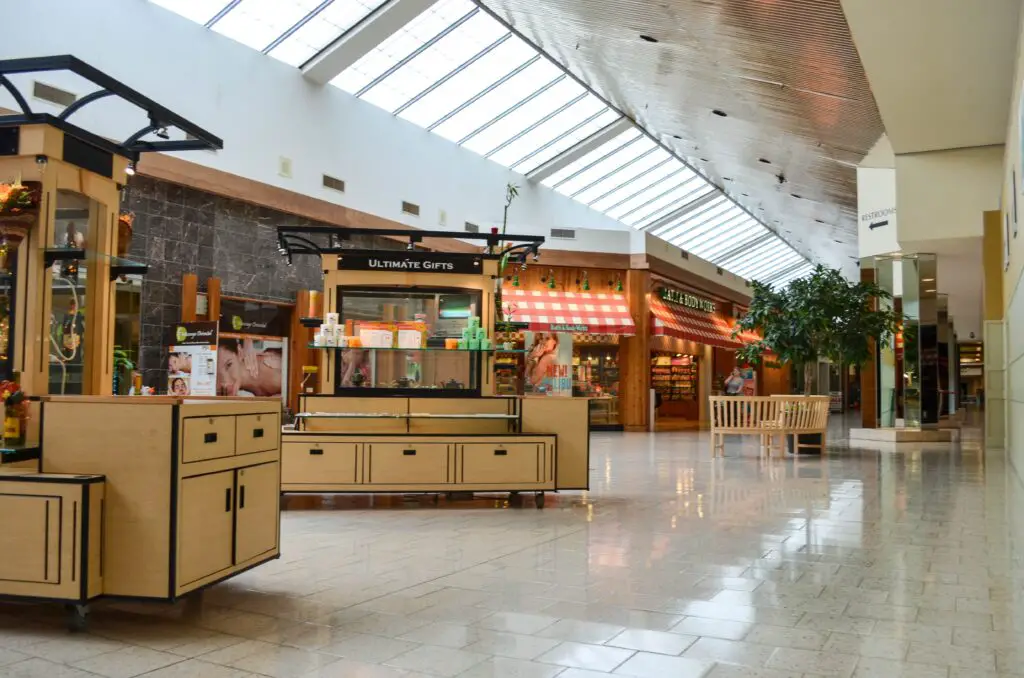
Rolling Acres Mall, once a vibrant shopping center in Akron, Ohio, opened in the 1970s and hit its peak in the ’80s. Its bold architecture and array of stores drew in shoppers from across the region, making it the place to go for both fashion and entertainment. But as time passed and larger malls popped up nearby, Rolling Acres faced a slow decline. By the mid-2000s, the mall had lost many of its anchor stores, and it ultimately shut down in 2008.
Today, the abandoned mall sits as a ghost of its former self, with its wide hallways and high ceilings now filled with silence. The once-bustling food court is now empty, and the stores that once lined the halls are either boarded up or vacant. Despite its current state of disrepair, the mall’s ’80s charm still lingers in the architecture, with remnants of its once-colorful signage and iconic design. It’s a haunting, nostalgic reminder of a time when malls were the epicenter of suburban life.
10. Metro Center Mall – Phoenix, Arizona
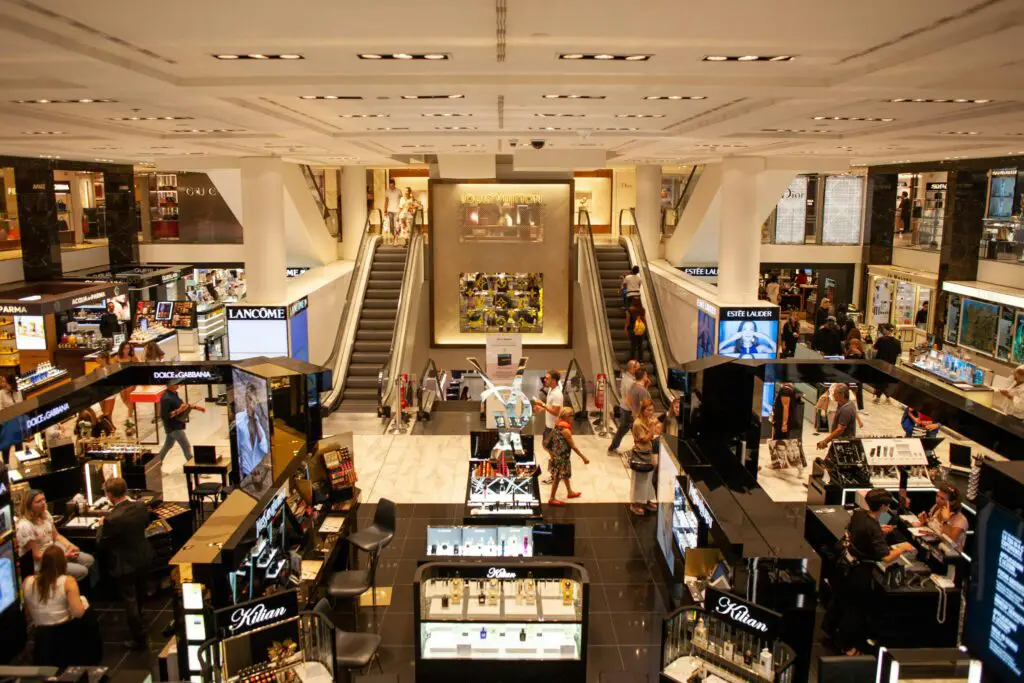
Metro Center Mall was one of Phoenix’s most beloved spots in the ’80s, boasting a variety of stores and a bustling atmosphere. During its heyday, it had everything from department stores to electronics shops, making it a one-stop-shop for just about anything. But, like many other malls of the time, Metro Center couldn’t escape the decline that befell many shopping centers as the years went on.
Walking through the mall today is like stepping into a time capsule of the ’80s. The once-vibrant halls are now eerily silent, with only a few scattered stores still in operation. The bright colors and bold signs that once filled the space now stand in contrast to the quiet decay that has taken over. Metro Center Mall may no longer be the bustling hub it once was, but its past continues to live on in the very fabric of its walls.
11. Northlake Mall – Atlanta, Georgia
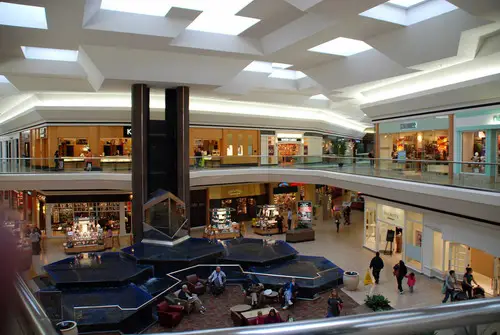
Northlake Mall, located in Atlanta, was once the heart of suburban shopping. Opening in the early ’80s, it quickly became known for its anchor stores and vibrant food court, which housed a variety of food options. However, the mall began to see a decline in popularity as newer and larger malls took over the area.
Today, Northlake Mall stands empty and almost forgotten. The once-crowded food court is now silent, and the retail stores have either closed or moved on. Despite the lack of activity, the remnants of its 1980s architecture and design are still visible, reminding visitors of the mall’s heyday. Its hollowed-out, quiet halls tell the story of a time when shopping was a social event, and Northlake was the place to be.
12. Cascade Mall – Burlington, Washington
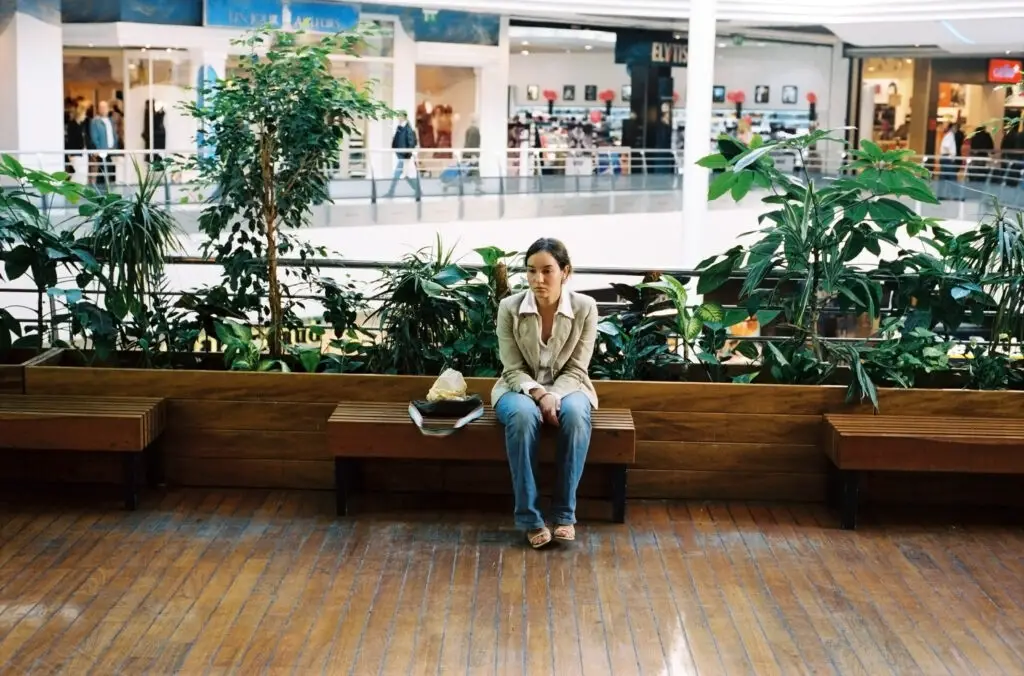
Cascade Mall, located in the picturesque town of Burlington, Washington, once captured the essence of ’80s shopping. The mall’s colorful exterior and spacious interior made it a favorite destination for shoppers looking for the latest trends. By the mid-2000s, however, the decline had set in, and the once-thriving center slowly fell into abandonment.
Though most of the stores have long since left, the structure of the mall remains an ode to the past. You can still find remnants of the mall’s lively days—faded signs, abandoned kiosks, and empty storefronts—standing as a tribute to its heyday. Cascade Mall serves as a haunting reminder of the heyday of the American shopping mall, when places like it were the beating heart of suburban life.
13. Dixie Square Mall – Harvey, Illinois
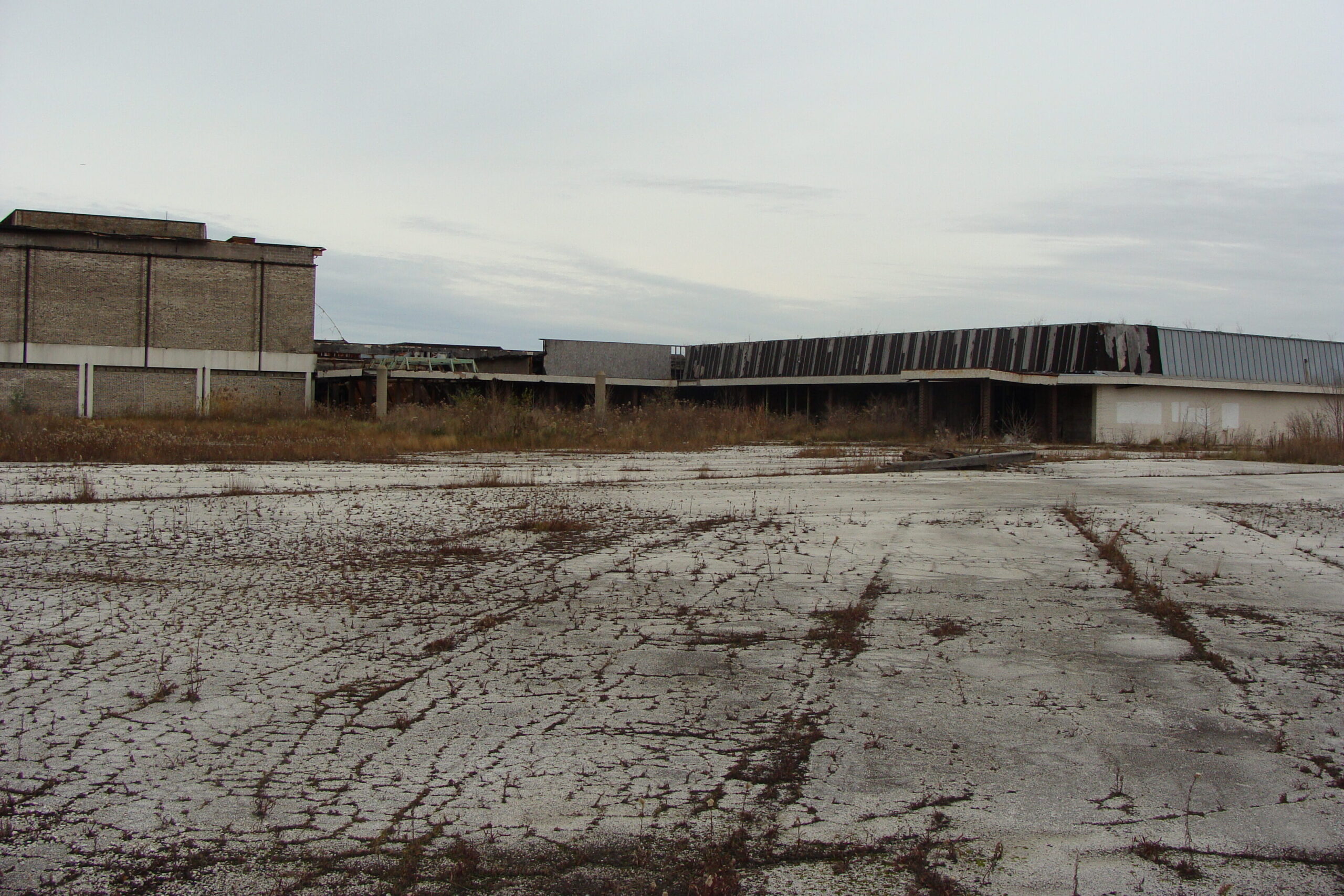
Dixie Square Mall in Harvey, Illinois, may be best known to movie buffs as the filming location for The Blues Brothers, but it was once a bustling shopping hub in the ’70s and ’80s. Shoppers flocked to its department stores and specialty shops, and the mall’s food court was always busy with families grabbing a quick bite. Over time, competition from newer malls and economic decline in the area led to its abandonment in the early ’80s.
Walking through Dixie Square today is like stepping onto a movie set frozen in time. The once-shiny floors are cracked and dusty, and the storefronts stand empty, their windows collecting decades of grime. The retro architecture and colorful signage still hint at the mall’s heyday, giving visitors a nostalgic look at suburban shopping from another era. It’s both haunting and oddly charming, a true time capsule of the ’80s.
14. Randall Park Mall – North Randall, Ohio
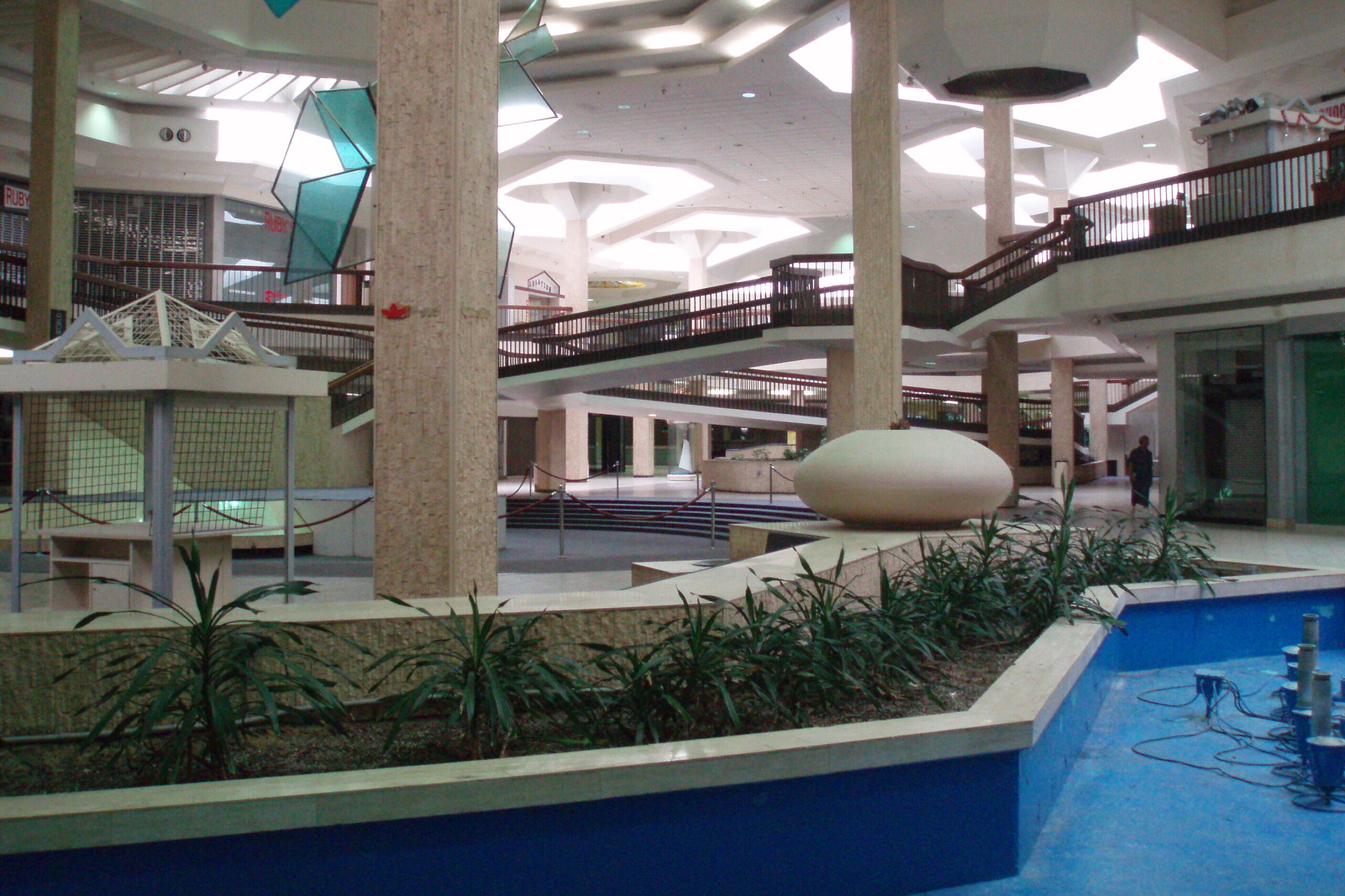
Once the crown jewel of Northeast Ohio shopping, Randall Park Mall was massive, filled with the biggest department stores and the latest retail trends of the ’80s. Families would spend entire weekends wandering its expansive halls, and teenagers would hang out at the food court or the arcade. By the late ’90s, however, the mall’s popularity waned, and it finally closed in 2009 after decades of decline.
Today, Randall Park Mall is a sprawling ruin. Its parking lots are overgrown, and its hallways echo with the memory of shoppers past. The fluorescent lighting and vintage store facades still transport visitors back to a time when malls were the heartbeat of suburban life. Despite its decay, the mall remains an intriguing snapshot of the past, perfectly frozen in a retro era.
15. Dixie Mall – Grand Prairie, Texas
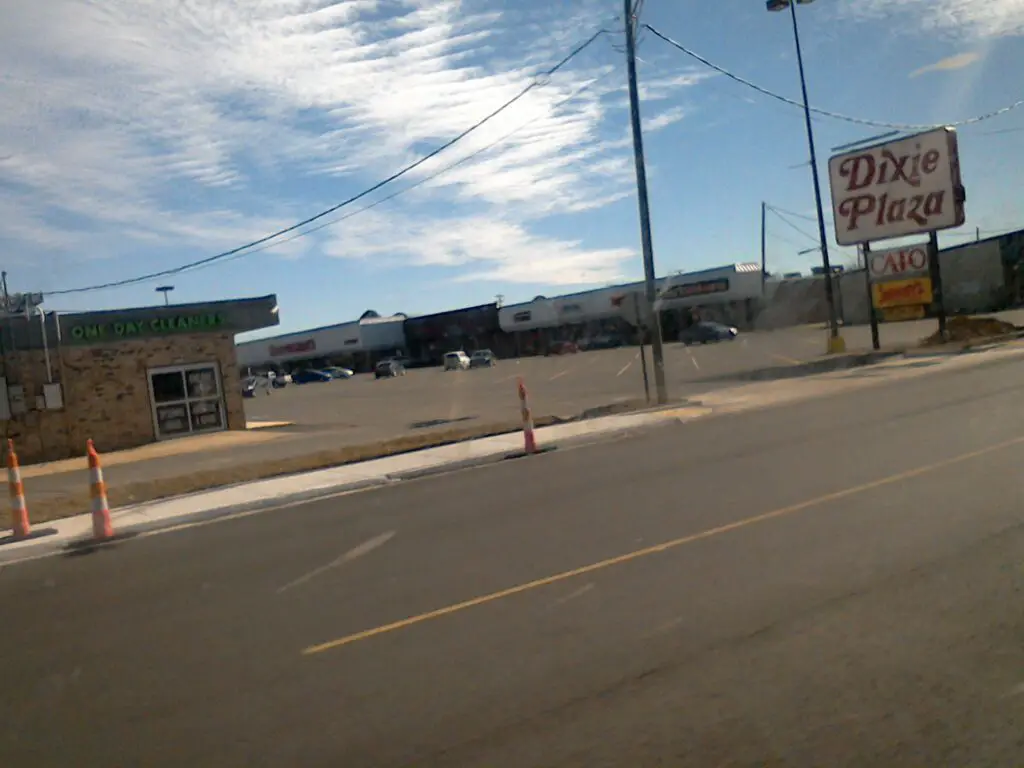
Dixie Mall in Grand Prairie was once the go-to spot for families in the Dallas-Fort Worth area. Its colorful signage and bustling corridors made it a standout in the ’80s shopping scene, complete with a food court that was always packed on weekends. But as new malls emerged and big-box retailers took over, Dixie Mall slowly emptied out, leaving it mostly abandoned by the early 2000s.
Walking through Dixie Mall today, you can still spot the neon signs and decorative tiling that gave it character in its heyday. The stores, now dark and empty, serve as a time capsule of ’80s consumer culture. It’s easy to imagine kids running past the arcade and shoppers carrying their favorite brand-name bags as you wander the empty corridors. The mall has become a curious relic, capturing the essence of a bygone era.
16. Burlington Center Mall – Burlington, New Jersey
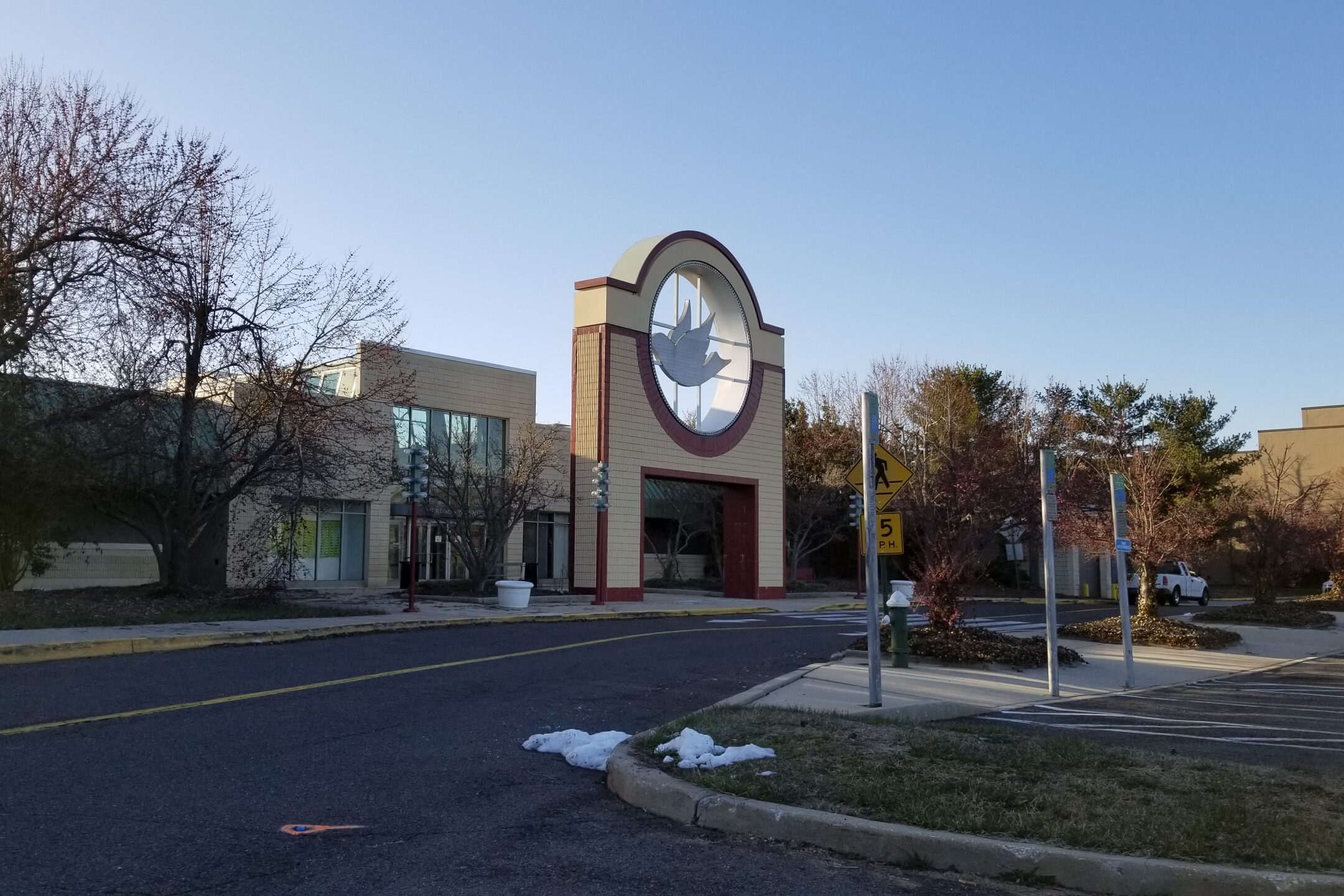
Burlington Center Mall was a favorite hangout spot in the ’80s, known for its friendly stores and vibrant food court. Families and teens alike flocked there for shopping, movies, and socializing. However, with the rise of online shopping and new retail centers, the mall struggled to maintain tenants and finally closed in 2018.
Even in its abandoned state, the mall retains a retro charm. Its bright tiles, skylights, and classic signage evoke the era when shopping malls were community hubs. Empty storefronts and quiet corridors give off a strange, nostalgic energy, almost like stepping into a forgotten memory. The mall may no longer bustle with life, but its ’80s spirit lingers in every corner.
17. Northland Mall – Columbus, Ohio
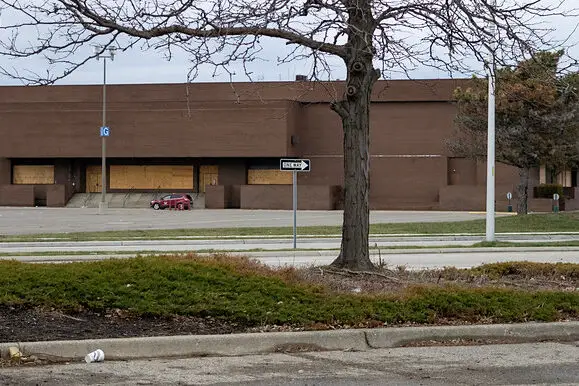
Northland Mall in Columbus was an iconic shopping destination in the ’80s, with department stores, specialty shops, and a lively food court drawing crowds from across the city. Teens loved it as a social hangout, and families appreciated its variety of stores and convenient layout. Unfortunately, the mall faced decline as newer shopping options became more appealing, leading to its closure in 2002.
Now, Northland Mall stands empty and quiet. The faded store signs and cracked tiles still capture the essence of 1980s retail culture, giving visitors a sense of nostalgia for its former life. Walking through the hallways feels like traveling back in time, imagining shoppers browsing the latest fashions and grabbing a slice of pizza in the food court. Despite its abandoned state, it remains a remarkable window into the past.
18. Rolling Hills Mall – Niles, Illinois
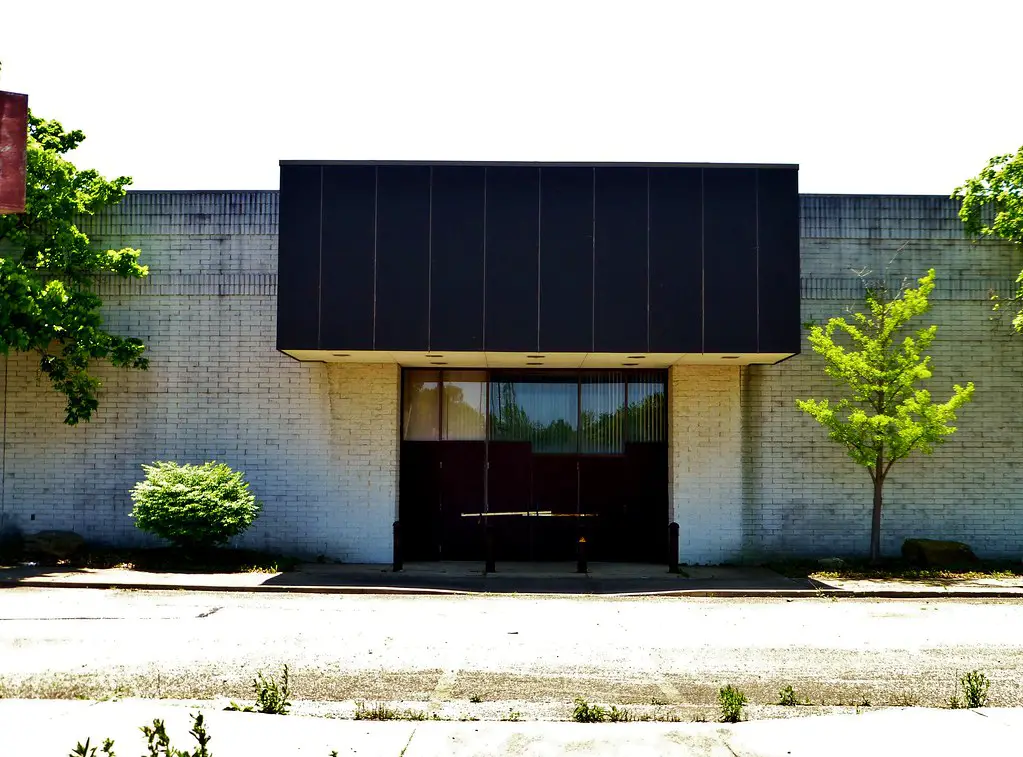
Rolling Hills Mall opened in the ’70s and became a favorite shopping destination in the Chicago suburbs throughout the ’80s. Its bright neon signage, spacious food court, and variety of stores made it a popular hangout for teens and a convenient shopping spot for families. But as retail trends changed, the mall slowly lost tenants and finally closed its doors in 2005.
Today, the mall is eerily quiet, with empty storefronts and a vacant food court offering a glimpse into its past. The design and retro aesthetics still carry that unmistakable ’80s feel, from the tile patterns to the colorful signage that once drew in crowds. Walking through Rolling Hills Mall now is a surreal experience, almost like flipping through a photo album of suburban shopping from decades ago. It’s a haunting yet nostalgic reminder of an era when malls were the center of social life.
